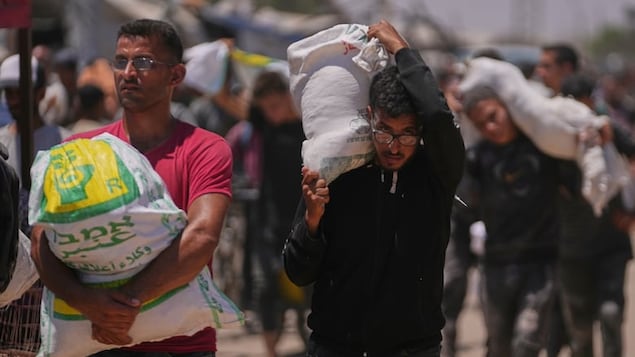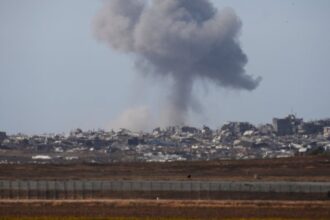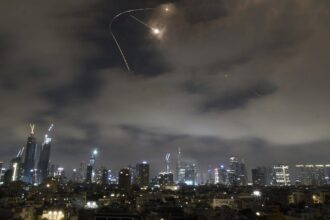In the shadow of ongoing conflict, Gaza’s humanitarian crisis has reached catastrophic proportions with devastating scenes unfolding as desperate civilians risk their lives for basic necessities. Last week’s tragedy at Al-Rashid Street, where over 100 Palestinians were killed while seeking food aid, represents just one deadly episode in a pattern of perilous aid distributions that have become increasingly lethal.
The chaotic scramble for survival has transformed humanitarian relief points into death zones. According to United Nations reports, at least 576 Palestinians have been killed near aid distribution sites since December, with thousands more injured. These staggering figures tell only part of the story behind Gaza’s deepening food security crisis.
“What we’re witnessing is unprecedented in modern humanitarian operations,” said Martin Griffiths, UN Under-Secretary-General for Humanitarian Affairs. “People are being killed while simply trying to feed their families. This violates every principle of humanitarian law and human dignity.”
The mechanics of this tragedy are complex. Aid trucks entering Gaza face a gauntlet of challenges: checkpoint delays, security inspections, and the constant threat of nearby fighting. Once inside, distribution becomes a dangerous free-for-all. With formal systems collapsed, crowds numbering in the thousands converge on arriving trucks, creating conditions where stampedes, shootings, and chaos have become tragically common.
The World Food Programme recently suspended land deliveries following security incidents, further straining an already desperate situation. Their assessment is stark: approximately 2.2 million people in Gaza are experiencing crisis levels of food insecurity, with famine conditions emerging in northern regions.
“Distribution points have become targets rather than havens,” explained Dr. Sarah Jameson, crisis response analyst at the International Food Policy Research Institute. “The combination of destroyed infrastructure, collapsed governance, and military operations has created a perfect storm where getting food has become as dangerous as the conflict itself.”
Particularly concerning is the emerging evidence suggesting some aid incidents may not be accidental. Investigations into the Al-Rashid Street deaths have raised questions about direct fire into civilian crowds. The Israeli military maintains that panic and crowd crush caused most casualties, but eyewitness accounts and medical reports suggest bullets caused many fatalities.
Canadian Foreign Affairs Minister Mélanie Joly expressed “profound concern” about the pattern of deaths at aid distribution points, calling for adherence to international humanitarian law and protected corridors for aid delivery. Her statement follows Canada’s recent announcement of additional humanitarian assistance for Gaza, though aid organizations report immense challenges in converting funding into actual food delivery.
The humanitarian situation continues deteriorating despite multiple UN Security Council resolutions calling for expanded aid access. Critical infrastructure destruction compounds the crisis, with damaged water systems forcing families to survive on as little as three liters of water daily—far below minimum humanitarian standards.
For ordinary Gazans, the calculus is grim: risk death by starvation or risk death seeking food. As one Gaza City resident told aid workers by phone: “We know we might die when we go for flour or rice, but we will certainly die if we stay home with nothing.”
As world powers debate ceasefire proposals and humanitarian corridors, the daily reality for Gaza’s population grows increasingly desperate. The fundamental question remains: how many more must die simply trying to feed their families before effective protection mechanisms are implemented? In a conflict where even bread has become worth dying for, the international community faces an urgent moral imperative to ensure humanitarian aid doesn’t continue to come at the cost of human lives.


















